Three Tropes for Entropy
Exhibition at CIAP | JESTER, Genk
mountaincutters, Angyvir Padilla & Daniel Steegmann Mangrané
05 Feb | 03 Apr 2022
 Three Tropes for Entropy, installation view. Image: Chantal van Rijt
Three Tropes for Entropy, installation view. Image: Chantal van Rijt With works by mountaincutters (FR), Angyvir Padilla (VZ) and Daniel Steegmann Mangrané (ES), Three Tropes for Entropy delves into three distinctive artistic practices, presenting their singular approaches towards notions of flux, energy, and transformation.
Laila Melchior and Koi Persyn — laureates of the second edition of the Lichen Curatorial Prize — present a transformative exhibition connecting three artistic practices and methodologies to the unique site of the former Winterslag coal mine. Having hosted an industrial complex of coal exploitation for approximately a century, this former mine site embodies the capacity to generate and process energy not only through its history but also in its recent transformation into a creative hub.
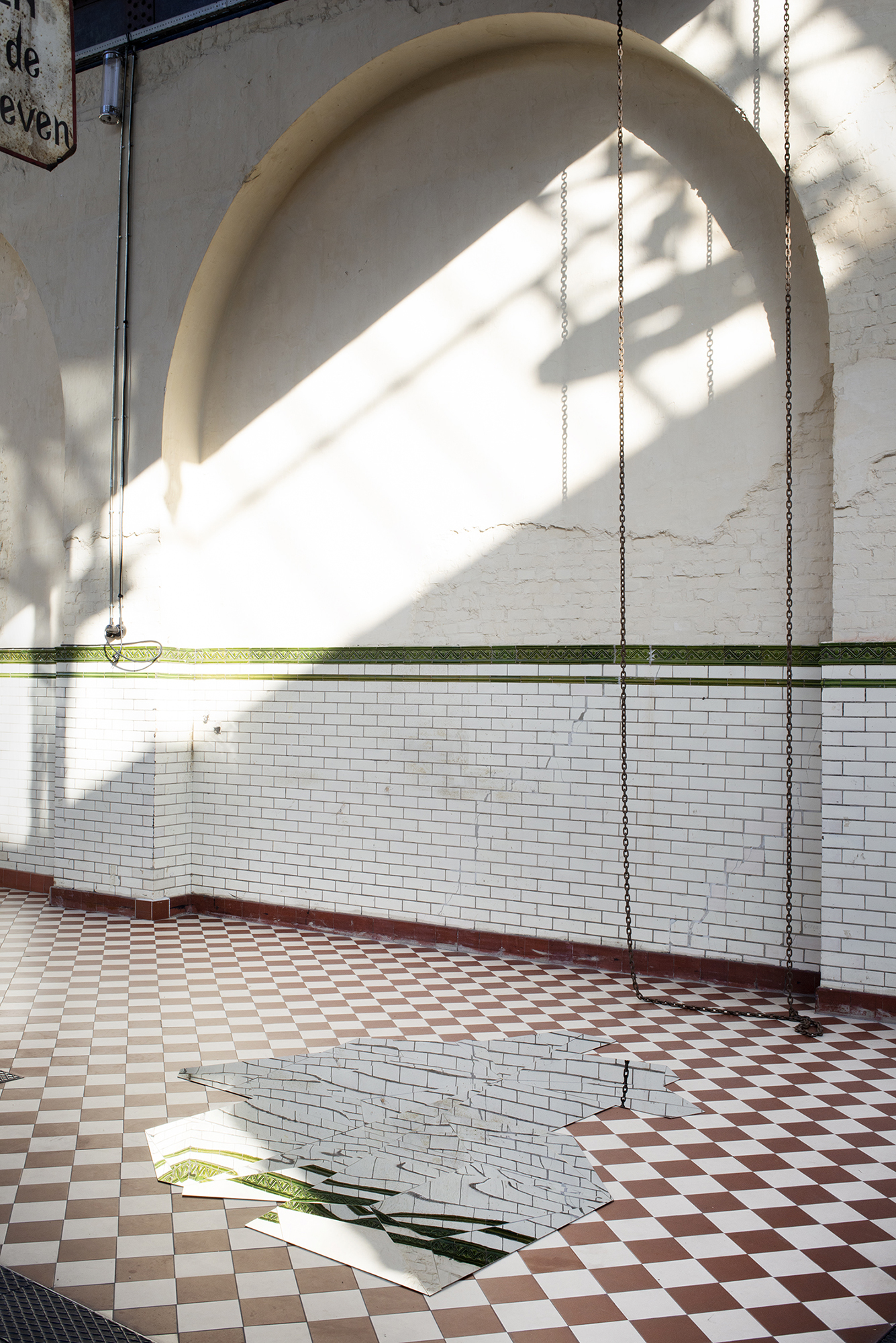
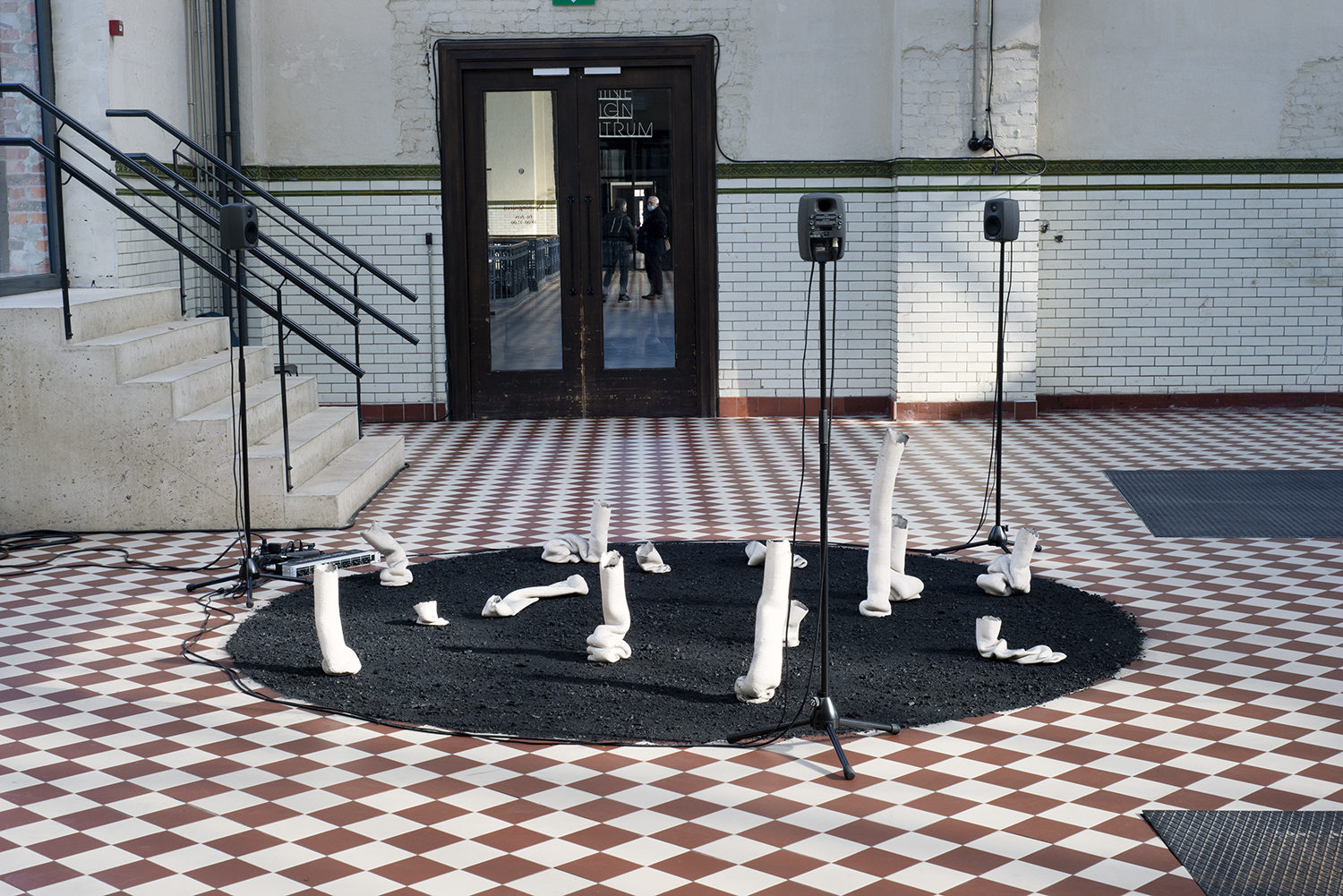





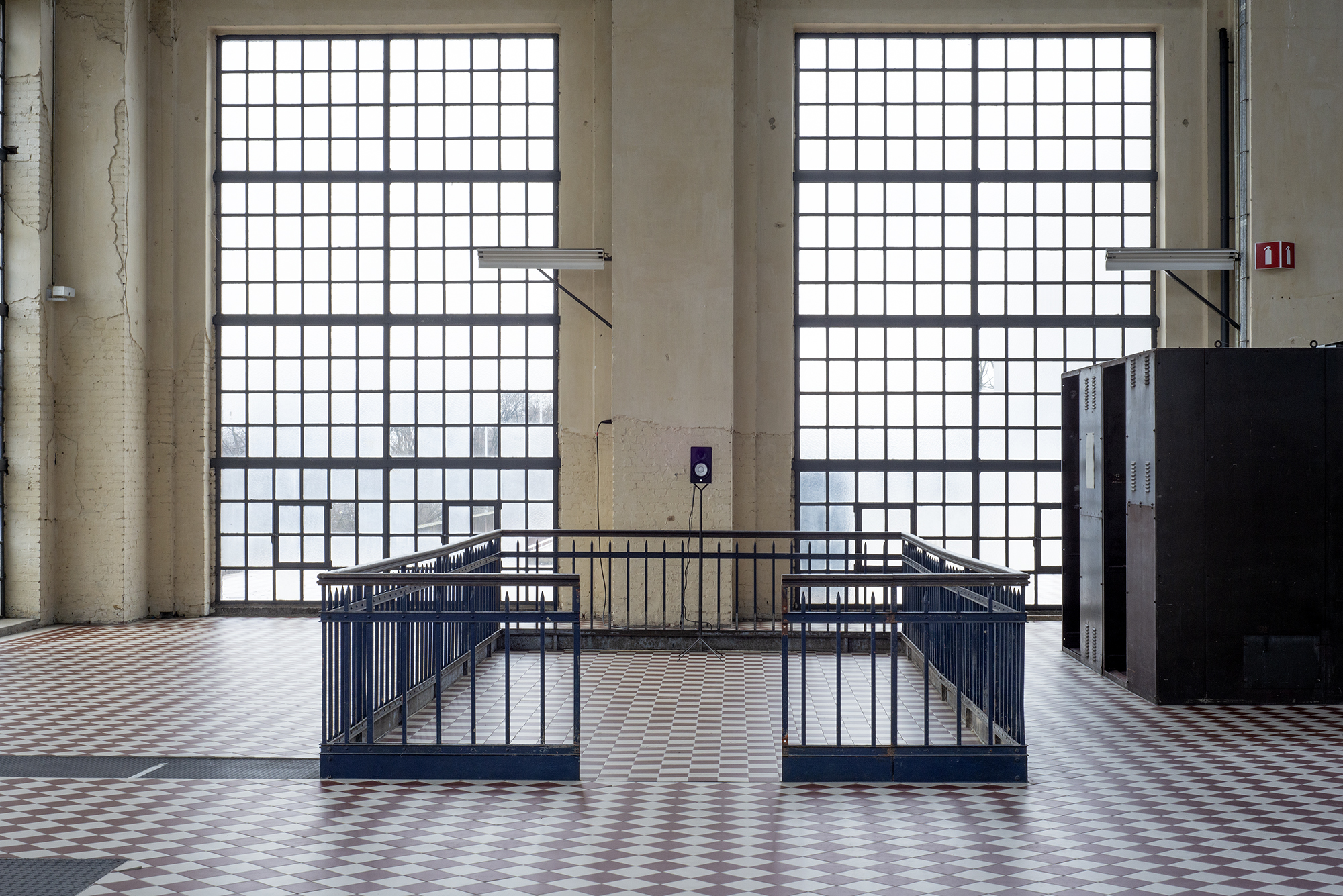

Three Tropes for Entropy, installation view. Image: Chantal van Rijt
‘Trope’ and ‘entropy’ share the same ancient Greek root in the word τροπή, evoking the ideas of turn and transmutation. Tropes are literary motifs that use figurative forms of language to increase the tangibility of meaning, stimulating associative perceptions. Entropy is a term that has gained momentum in current times. A scientific concept that stems from thermodynamics, it indicates a transmission process within a closed circuit. Drawing from this specific usage to a more general one, it has been widely used to exemplify the irreversibility of time, of processes that have a clear start but no defined end and that can become quite invisible, as much as they are omnipresent.
In parallel with and inspired by such a mixture of possible approaches to the phenomenon of transformation, the exhibition itself undergoes a change over its course. Three Tropes for Entropy opens with clusters of works highlighting each participating practice and gradually evolves towards an intermingled diffusion of particles. These transformations will be marked by three activated moments or chapters – identified by the curatorial duo as exhibition’s ‘tropes.’ These gradual changes allow for interactions between the works themselves and the space, modulating intensities to render visible the mutability that circulates inside the engines of practices.
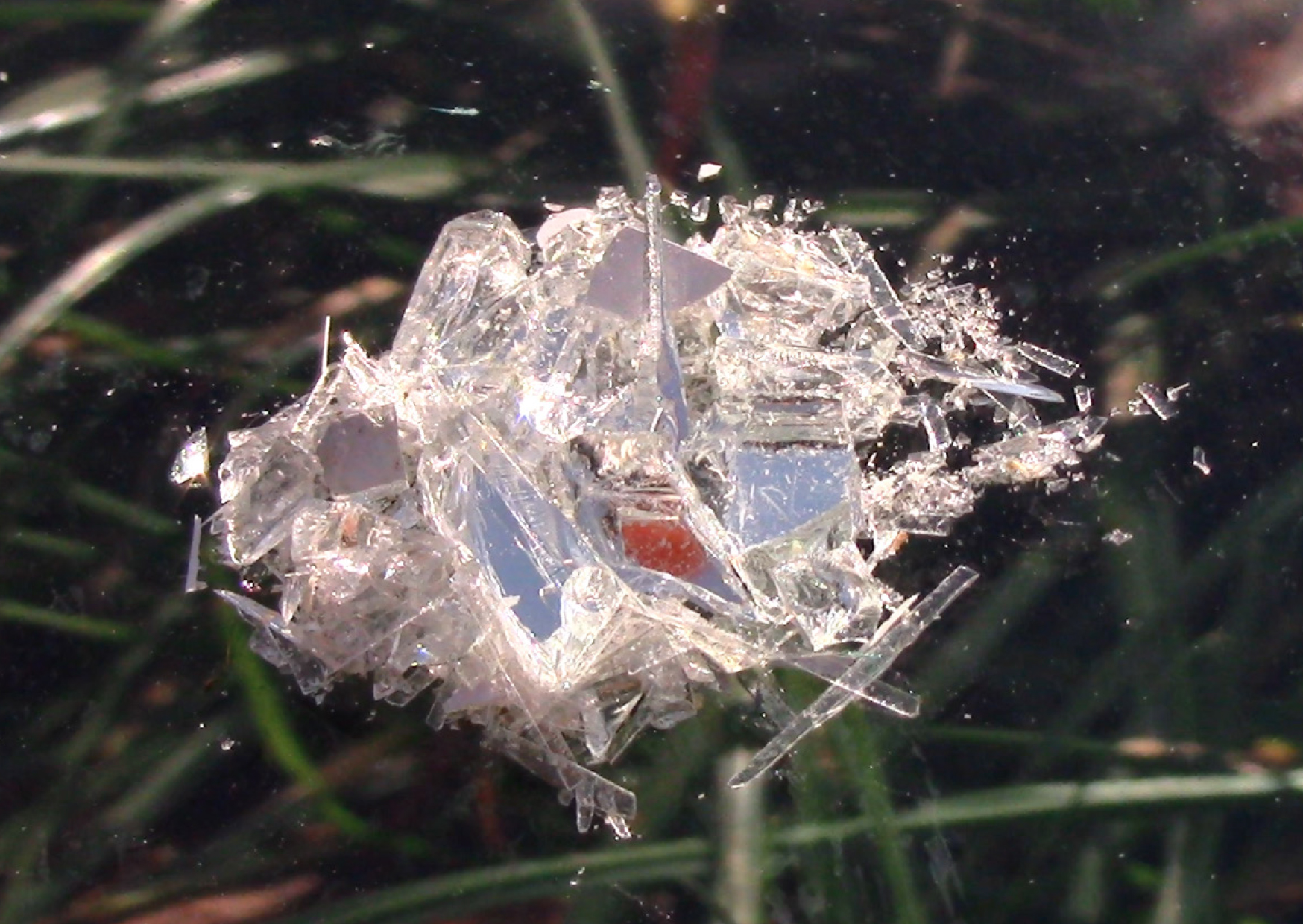
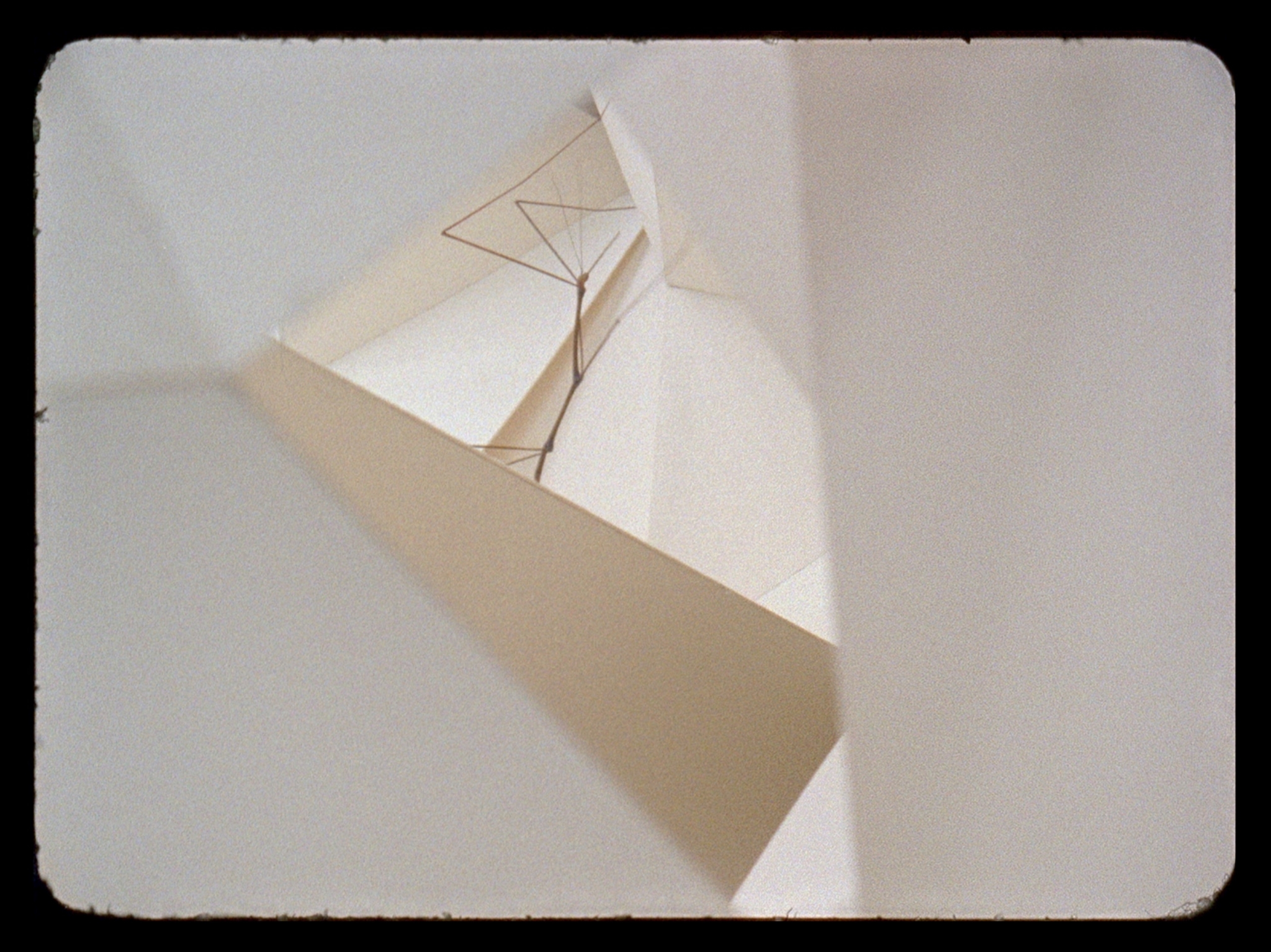
The artists
mountaincutters (FR, °1990) is a hybrid identity, living and working in Brussels. Their duo-practice consists mainly of site-specific sculptures that reconfigure the space where they are exhibited. Through poetic texts and analogue photographs, the duo often finds historical and/or material leads that form the basis of their sculptural installations. These constellations of glass, ceramic, copper and metal objects are in constant flux, forming a closed circuit between the different entities. The in-situ works balance on the threshold of inactive and dynamic, present and invisible, rough and refined. Like an echo of this confused identity, the installation adds an aesthetic uncertainty, favouring transitory situations and unfinished forms for seemingly fortuitous compositions. mountaincutters unifies phenomena that are considered incompatible into one coherent volume, therefore pushing the boundaries of the sculptural into conflict.
Angyvir Padilla (VZ, °1987) lives and works in Brussels. In her practice, she invites the viewer to look closer at the places we inhabit by examining how we embody memory. Padilla proposes that the traces of our past seep into a persistent present. Her immersive installations distil the concept of ‘home’ as an intimate, secluded place and relate this notion to people and nature. Padilla’s practice explores the discrepancies and intervals between identity, material and space. Her work turns around the sense of otherness one encounters once presence enters into a dialogue. Angyvir Padilla often works presenting objects and processing materials in relation to the spatial environment in order to connect emotionally with the viewer.
Daniel Steegmann Mangrané (ES, °1977) lives and works in Rio de Janeiro. His research is composed of subtle yet crude experiments that question the relationship between language and the world. Although primarily conceptual, his installations engage with the spectator’s imagination and exhibit a strong concern with the existence of everything we see, but especially on everything that we do not see. Mangrané’s work often traces the boundary where nature meets artifice. Lines, circles and rhombuses are drawn, cut and projected onto leaves; the delicate symmetry of branches is split in two. These precise interventions hold a powerful force of attraction: a moment of uncertainty between what is contrived and what is natural. In each of Steegmann Mangrané’s intricate compositions, we get to experience that, far from being distinct, the organic and the geometric, the vital and the abstract, define each other.
𝘓𝘪𝘤𝘩𝘦𝘯 𝘪𝘴 𝘢 𝘱𝘳𝘪𝘻𝘦 𝘧𝘰𝘳 𝘦𝘮𝘦𝘳𝘨𝘪𝘯𝘨 𝘤𝘶𝘳𝘢𝘵𝘰𝘳𝘴, 𝘦𝘴𝘵𝘢𝘣𝘭𝘪𝘴𝘩𝘦𝘥 𝘣𝘺 Jester (former FLACC/CIAP) 𝘢𝘯𝘥 𝘵𝘩𝘦 𝘥𝘦𝘱𝘢𝘳𝘵𝘮𝘦𝘯𝘵 𝘰𝘧 𝘊𝘶𝘳𝘢𝘵𝘰𝘳𝘪𝘢𝘭 𝘚𝘵𝘶𝘥𝘪𝘦𝘴 𝘢𝘵 𝘒𝘈𝘚𝘒 𝘚𝘤𝘩𝘰𝘰𝘭 𝘰𝘧 𝘈𝘳𝘵𝘴 𝘵𝘰 𝘧𝘰𝘴𝘵𝘦𝘳 𝘢𝘯𝘥 𝘴𝘶𝘱𝘱𝘰𝘳𝘵 𝘤𝘶𝘳𝘢𝘵𝘰𝘳𝘪𝘢𝘭 𝘦𝘹𝘱𝘦𝘳𝘪𝘮𝘦𝘯𝘵𝘢𝘵𝘪𝘰𝘯 𝘪𝘯 𝘉𝘦𝘭𝘨𝘪𝘶𝘮. 𝘞𝘪𝘵𝘩 𝘵𝘩𝘦 𝘴𝘶𝘱𝘱𝘰𝘳𝘵 𝘰𝘧 𝘵𝘩𝘦 𝘍𝘭𝘦𝘮𝘪𝘴𝘩 𝘊𝘰𝘮𝘮𝘶𝘯𝘪𝘵𝘺, 𝘵𝘩𝘦 𝘊𝘪𝘵𝘺 𝘰𝘧 𝘎𝘦𝘯𝘬, 𝘢𝘯𝘥 𝘵𝘩𝘦 Jester 𝘮𝘦𝘮𝘣𝘦𝘳𝘴.
For further info check CIAP's website here